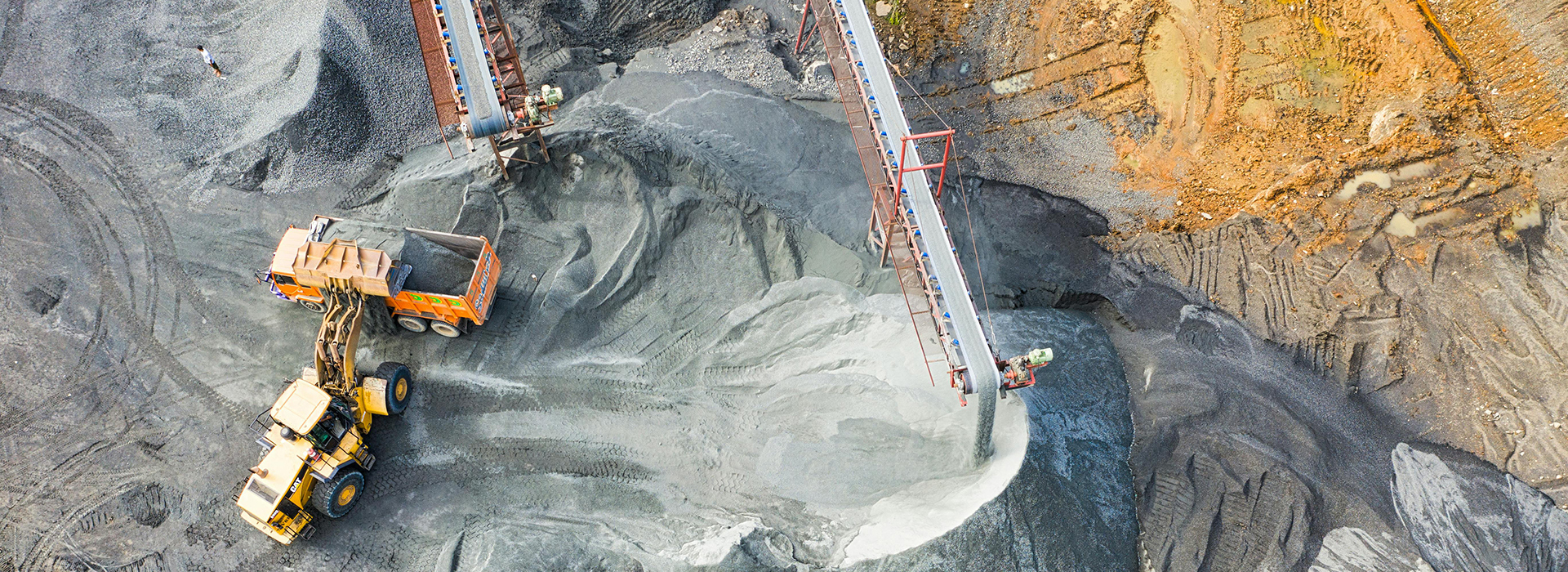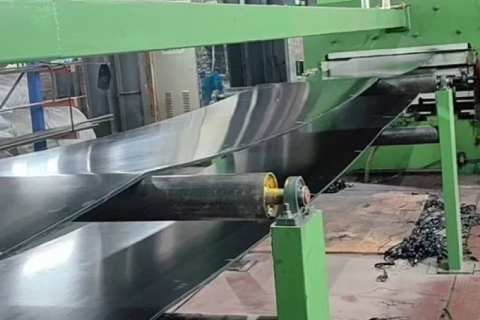
- Home
- >
News
Fire resistant rubber conveyor belts are conveyor belts made of multi-layer polyester-cotton cloth or polyester canvas covered with heat-resistant glue and bonded together by high temperature vulcanization. They are suitable for conveying hot coke, cement, slag and hot castings below 175℃. The covering rubber of fire resistant rubber conveyor belts will produce a microporous carbonized layer when encountering high temperature, which is fireproof and resistant to combustion, which can prevent further heat transfer to the belt body and reduce the internal strength of the belt. The carbonized layer will produce irregular small cracks during the operation of the belt body, which is used to cool the belt body. The unique formula design of fire resistant rubber conveyor belts solves the key problems of high saturation, poor adhesion, and low adhesion between layers of ethylene-propylene rubber. It has the characteristics of light belt body, long life, and good heat resistance.
Heat resistant conveyor belt is a special kind of conveyor belt used in high temperature environments. It is usually made of multi-layer rubber-cotton canvas or polyester canvas covered with high-temperature or heat-resistant rubber and bonded together by high-temperature vulcanization. The main structure of heat resistant conveyor belt is composed of a high temperature resistant burning layer, a transition layer, an organic heat insulation layer, a strong layer and a heat-resistant layer. It is generally used in steel, cement, chemical and other industries. It can be used under the condition that the material temperature does not exceed 800℃ and the surface temperature does not exceed 220℃.
Multi ply belts are a kind of transportation tool used to transport various materials. Traditional conveyor belts cannot cope with high temperature environments. Our heat resistant conveyor belts are unique in design and material, and can adapt to high temperature working environments.
Conveyor belts are widely used in industry, and they play an important role in industries that need to transport high-temperature materials. The heat resistant conveyor belt is made of multiple layers of rubber cotton canvas (polyester cotton) or polyester canvas, covered with high-temperature or heat-resistant rubber, and bonded together by high-temperature vulcanization. heat resistant conveyor belt are suitable for conveying such as hot coke, cement, slag and hot castings below 175°C, and are mainly used in metallurgy and construction industries. The unique design of this solves the problems of ethylene propylene rubber due to high saturation, poor adhesion and low interlayer adhesion.
As an indispensable part of the industrial field, nylon conveyor belt can greatly improve work efficiency. By using electric pulleys and conveyor belts to move materials in industrial work, it is generally used for relatively heavy or large items.
1.Rubber conveyor belt: Rubber conveyor belt is one of the most commonly used heat resistant conveyor belt. It is made of rubber material, has good high temperature resistance and tensile resistance, and can adapt to higher temperatures and pressures.
Heat resistant conveyor belt is mainly made of ethylene propylene rubber, which can withstand 600℃ high temperature for a short time or 200-300℃ high temperature for a long time. It is mainly composed of multiple layers of canvas covered with high temperature or heat resistant rubber, which are bonded together by high temperature vulcanization. It is generally used to transport hot coke, cement, slag, hot castings, etc.







